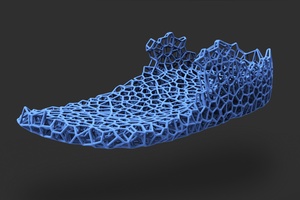Future Thinking IV: 3D scanning
The fourth in the Future Thinking series, Sarosh Mulla investigates three dimensional point cloud scanning technology.
If you have ever seen a surveyor do a site survey with the assistance of a dumpy level, you may soon be able to rely on this story as a tale of simpler times for your grandchildren. Modern surveying equipment has, for the most part, taken out much of the guesswork of the capturing contours of a building on a complex site, or documenting as-built dimensions, or for that matter ensuring regulatory compliance. But laser scanning and point cloud processing technology is beginning to render traditional forms of surveying redundant.

Three dimensional point cloud scanning technology has been the subject of much research and development for the past decade and has made many forays into the public consciousness including music videos for the likes of Radiohead and the 3D scanned and rendered objects in Google Earth.
The technology is commercially available and Auckland-based consultancies, such as AsBuilt, are now offering services that utilize the vast quantity of data that can now be collected and managed easily. The technology can be applied to capture the intricacies of architecture that we have previously struggled to document efficiently. For instance, heritage buildings can be scanned (with all of their alterations and surface wear) and the data used to generate digital models that can be used in their preservation and maintenance.
Pieces of ancient architecture, such as those listed as world heritage sites by UNESCO, are now being scanned and digitally modelled. Capturing these spaces, before they either fall into disrepair, or are destroyed by war, does not only aid academics, but also opens the door for a collective, three-dimensional archive of the world’s architectural history. In turn, such an archive of architectural treasures could be made into an immersive Virtual Reality experience for tourists in the future.

Similarly, special landscape ecologies are now also being scanned using small drones. At some ecosanctuaries work is already underway to scan the form of the recovering bush from above using drones. This data will then be used to track the recovery of the landscape. It is hoped that in time the data will become so high resolution that it will allow ecologists to pick out individual species within a digital model of the ecosanctuary, aiding them in the fight against invasive weeds.
But point cloud scanning technology could also have other uses too. If we apply the principles of mass-customization to 3D scanning technology, we could create products that are specific to each individual. For instance, customized running shoes are already being produced from 3D scans of a customers feet. It is not hard to imagine this technology in every Nike or Puma store around the world.
What would happen if this approach spread eventually to architecture? Could we move beyond using a client’s favourite colours and instead look at creating space based on anthropomorphic scans of their bodies? Could a house be parametrically tuned based on the detailed scanning of its occupants?















